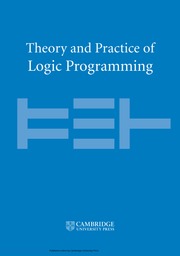Article contents
Fuzzy linguistic logic programming and its applications
Published online by Cambridge University Press: 01 May 2009
Abstract
The paper introduces fuzzy linguistic logic programming, which is a combination of fuzzy logic programming, introduced by P. Vojtáš, and hedge algebras in order to facilitate the representation and reasoning on human knowledge expressed in natural languages. In fuzzy linguistic logic programming, truth values are linguistic ones, e.g., VeryTrue, VeryProbablyTrue and LittleFalse, taken from a hedge algebra of a linguistic truth variable, and linguistic hedges (modifiers) can be used as unary connectives in formulae. This is motivated by the fact that humans reason mostly in terms of linguistic terms rather than in terms of numbers, and linguistic hedges are often used in natural languages to express different levels of emphasis. The paper presents: (a) the language of fuzzy linguistic logic programming; (b) a declarative semantics in terms of Herbrand interpretations and models; (c) a procedural semantics which directly manipulates linguistic terms to compute a lower bound to the truth value of a query, and proves its soundness; (d) a fixpoint semantics of logic programs, and based on it, proves the completeness of the procedural semantics; (e) several applications of fuzzy linguistic logic programming; and (f) an idea of implementing a system to execute fuzzy linguistic logic programs.
Keywords
Information
- Type
- Regular Papers
- Information
- Copyright
- Copyright © Cambridge University Press 2009
References
- 23
- Cited by

